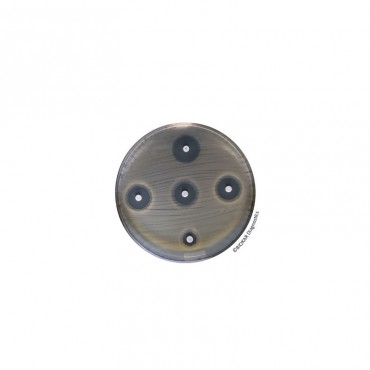- +Products
- +Allergen testing
- +Culture Media - reagents and reference material
- +Environmental testing solutions
- +Laboratory Consumables
- +Laboratory equipment
- +Microbiology equipment
- +Neogen® Food Safety Solutions
- +Temperature & Humidity Monitoring
- Services
- SUPPORT
- News
- +About Us
- Contact




Mueller-Hinton Agar
Mueller Hinton Agar is recognized by all experts as being the reference medium for the study of the susceptibility of bacteria to antibiotics and sulfamides. It is also useful for the isolation of Neisseria and is an excellent base medium for the preparation of blood agars.
The typical composition responds to that defined in the standards NF U47-106 and NF U47-107.
Available as dehydrated medium: 500 g bottle.
In compliance with regulatory requirements, a USDA permit (VS 16-3) is mandatory for shipments from Canada to the USA due to the inclusion of peptone, an animal byproduct.
The choice of ingredients is determined in order to obtain a very low quantity of thymine and thymidine (substances known to inhibit the antibacterial activity of trimethoprim), and a very low quantity of para-aminobenzoic acid (PABA) and its structural analogues (which antagonize the activity of sulfonamides).
As a result of the influence of calcium and magnesium on the sensitivity of Pseudomonas strains to aminoglycosides, Reller et al. recommended that the ion concentrations be included within the following limits :
- calcium : 50-100 mg/liter
- magnesium : 20-35 mg/liter.
The Kirby-Bauer method is based on the diffusion of antibiotics impregnated in previously dried paper disks, deposited on the surface of the agar. When applied to the surface of the agar, the disks absorb a sufficient quantity of water to dissolve the antibiotic, which then diffuses into the medium according to physical laws of diffusion of molecules through a gel. In this way, a concentration gradient of antibiotic forms around each disk. At the same time as the antibiotics diffuse, the bacteria inoculated on the surface of the agar multiply. During the logarithmic phase of growth, bacterial multiplication is more rapid than the diffusion of the antibiotic and uninhibited bacterial cells continue to multiply until growth can be visualized.
No growth appears when the antibiotic is present at inhibiting concentrations. It now becomes possible to measure the diameter of the inhibition zone, which is indirectly proportional to the minimal inhibitory concentrations found by the dilution method. Tables exist for interpreting the results in order to determine if the bacteria are sensitive or resistant to the antibiotic tested.




